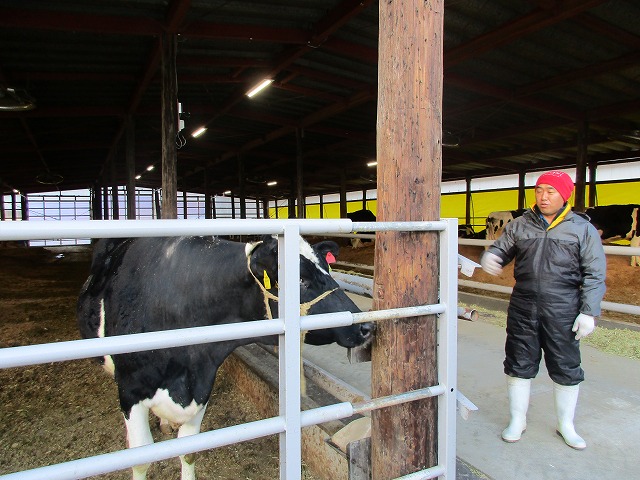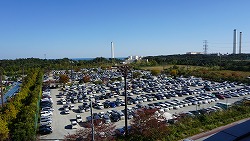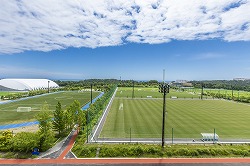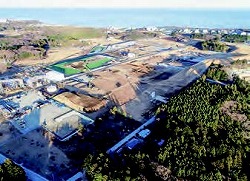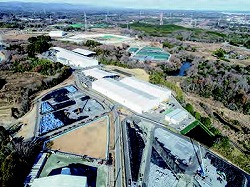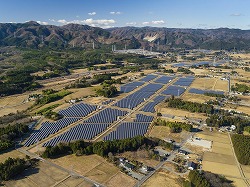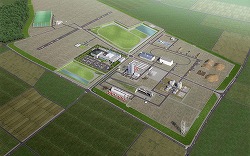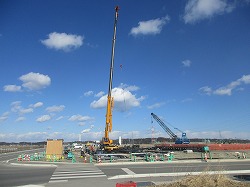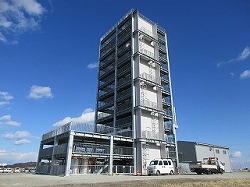実施日 : 2019年02月19日(火) - 20日(水)
Notice: Fukushima Press Tour
投稿日 : 2019年01月30日
[Overview]
<Themes>
1. Fresh starts in Fukushima, eight years after the nuclear disaster
2. Environmental recovery initiatives in Fukushima: Interim Storage Facility for soil removed as part of nuclear disaster decontamination process
3. Fukushima Innovation Coast Framework: National project to recover industry and employment lost due to the disaster
Fukushima is the only place in the world to have experienced an earthquake, tsunami, and nuclear disaster at the same time, and while it continues to face various complicated issues and suffer from misinformation, many people are continuing to work towards a hopeful future despite the difficult conditions. This tour will examine what is going on in Fukushima, eight years after the Great East Japan Earthquake and the nuclear disaster, and the people who continue to work hard towards recovery.
[Tour Details]
<Theme 1. Fresh starts in Fukushima, eight years after the nuclear disaster>
1. Katsurao Kochoran (Katsurao)
The entire village of Katsurao was evacuated after the nuclear disaster, but in June 2016, the evacuation order was lifted for the majority of the region. With whether or not residents will return an issue, there is an initiative to encourage residents to return and help recovery of agriculture in the village through the cultivation of moth orchids (kochoran), and in July 2018, shipments of these orchids to the Tokyo area began. The orchids are being grown by Katsurao Kochoran, a company established by local farmers and a business in Tokyo in 2017. Flowers are less affected by negative perceptions of Fukushima, and women and seniors are able to safely help in growing them. As a symbol of hope for recovery, the orchids are named Hope White orchids, and 48,000 flowers are expected to be delivered annually. Mr. Hirosumi Sugishita wanted to help with the recovery of his hometown and quit his previous job to help start Katsurao Kochoran, learning skills to cultivate orchids and acquiring the necessary certifications. Mr. Sugishita says he wants to expand the cultivation of orchids and help contribute to the recovery of agriculture in the village.
The tour will visit a greenhouse where approximately 10,000 orchids are in bloom, awaiting delivery, and speak with Mr. Sugishita.
2. Sakuma Farm (Katsurao)
Before the disaster, Mr. Tetsuji Sakuma had 130 dairy cows and shipped 2,700 liters of milk daily, but when the village was ordered evacuated he had to give up all his cows. He nonetheless chose to work towards starting up his dairy farm again. In June 2016, the evacuation order was lifted for most of Katsurao, and in December 2017 restrictions on shipping raw milk from there were lifted, so Mr. Sakuma returned to the village in April 2018. Approximately 90% of Mr. Sakuma’s farmland is still designated as a Difficult-to-Return zone, and being unable to use his composting center and storehouse made restarting his business more difficult, but in September 2018 he managed to purchase eight dairy cows, and for the first time in over seven years he once again had cows on his farm. After confirming the safety of the milk with testing, he began shipping milk again on January 11, 2019. Currently, he has 40 dairy cows, and is planning to have 300 cows in the future, more than he had before the disaster.
The tour will visit Sakuma Farm, and hear about his efforts to restart his dairy business since the nuclear disaster, and his plans for the future.
3. J Village (Naraha)
J Village opened as Japan’s first soccer-only national training center in 1997. Its massive grounds have eight soccer fields with natural grass and three and a half fields with artificial grass. In the 14 years up to the Great East Japan Earthquake, 500,000 people visited each year as a mecca for Japanese soccer, but after the disaster it was used as a headquarters for decommissioning the nuclear power plant, and stopped operating as a training center. The natural grass fields, which J Village workers had been reluctant to step on as “holy ground,” were covered by gravel and asphalt to be used as parking lots for work vehicles, and housing was also built on the grounds for workers. Over seven years later, in July 2018, the majority of J Village reopened for business. New grass was planted, and new accommodations opened as well. In September 2018, a new all-weather training ground with a roof was also built. All the facilities are planned to be open by April 2019, and training camps are planned for both the men’s and women’s Japanese national soccer teams for the 2020 Tokyo Olympics. According to Mr. Yasuhiro Igari of the J Village Business Operations Section, who worked on reopening it, “No one thought we would be able to reopen, but when the 2020 Tokyo Olympic bid was successful there was a movement to reopen J Village. With the opportunity brought by these Olympics, I would like to see athletes from around the world do training camps here and spread word of Fukushima’s recovery.”
The tour will visit J Village, which has made a new start as a symbol of the recovery, and see the natural grass fields and all-weather training ground.
(Pictures provided by J Village)
4. Futaba Inc. (Tomioka)
Established as a surveying company, Futaba is involved in environmental surveys, geospatial surveys, design, and consulting both in Japan and overseas. The company had to evacuate to Koriyama after the tsunami and nuclear disaster due to the Great East Japan Earthquake, but in August 2017 they rebuilt their head office in Tomioka. In addition to supporting the recovery of Fukushima with construction consulting and surveying using cutting-edge technology, Futaba is also involved in ODA projects overseas in order to repay the support provided from around the world after the disaster. Using their advanced surveying techniques, the company created 3D data of a cherry tree avenue known as the “Sakura Tunnel,” located in Tomioka’s Yo no Mori district. The majority of this area, which was once a popular tourist attraction, is still designated as a Difficult-to-Return zone, and closed to visitors. This 3D data of the symbolic heart of the town allows evacuated residents and others to experience the cherry tree avenue in VR, helping them to maintain their connection to Tomioka. The detailed simulation used drones and 3D laser scanners to reproduce everything down to the last petal.
The tour will hear from Futaba’s president, Mr. Shubun Endo, about the company’s efforts since the disaster and its initiatives to help the recovery of Fukushima, and have the opportunity to experience the Yo no Mori cherry tree avenue in VR.
<Theme 2. Environmental recovery initiatives in Fukushima: Interim Storage Facility for soil removed as part of nuclear disaster decontamination process>
1. Fukushima Prefectural Centre for Environmental Creation (Commutan Fukushima)
Commutan Fukushima, the information and communication building of the Fukushima Prefectural Centre for Environmental Creation, is a facility that allows visitors to learn about Fukushima’s current environment and its progress in recovery from the nuclear disaster, as well as learning about what radiation is. With interactive exhibits and a dome theater, many people visit from both Japan and abroad, including many elementary school students from Fukushima. There were approximately 100,000 visitors to Commutan Fukushima in 2017.
In addition to a basic explanation of radiation, and an exhibit in which radiation levels in Fukushima from immediately after the earthquake can be compared to levels today in real time, there will be a briefing about the state of recovery throughout Fukushima Prefecture as a whole.
2. Interim Storage Facility
The Interim Storage Facility is a national facility for the safe and intensive storage of contaminated soil and waste generated by the decontamination process, until its final disposal. The ISF is being made in an area that is approximately 8 kilometers long north to south and 16 square kilometers, surrounding the Fukushima Daiichi Nuclear Power Station and including the villages of Okuma and Futaba. With land continuing to be acquired for the ISF and construction still ongoing, storage of removed soil began in October 2017 after the completion of the soil storage facility. The soil and waste kept in flexible container bags at temporary storage sites throughout Fukushima is transported to the reception/separation facility as is, and after separating other matter such as combustible materials and large rocks the soil is stored in the soil storage facility according to its concentration of radioactive cesium, with combustible materials including plant matter incinerated to ash to reduce its volume. The Ministry of the Environment estimates that approximately 14 million cubic meters of soil and waste has been brought into the ISF (as of October 2018), and expect transportation to the ISF to be complete by the 2021 fiscal year.
The tour will hear from a Minister of the Environment official about the current state of the Interim Storage Facility, before seeing the reception/separation facility and soil storage facility. (The reception/separation facility will be viewed from behind a window. No video footage allowed in the facility.Tour participants will get off the bus to film and photograph the soil storage facility. The bus will enter the reception/separation facility, and it will be possible to film and photograph through the windows.)
<Theme 3. Fukushima Innovation Coast Framework: National project to recover industry and employment lost due to the disaster>
1. Tomioka Recovery Mega Solar Power Plant Sakura (Tomioka)
The Tomioka Recovery Mega Solar Power Plant Sakura, located in Tomioka, is a mega solar power plant operated by Tomioka Recovery Energy, a company financed by the City of Tomioka, Fukushima Electric Power, and JR East. Using approximately 40 hectares of farmland that was unused due to the nuclear accident, the plant began operation in November 2017. Its output of approximately 30 megawatts is among the largest in Japan, supplying enough power for 9100 average households. Fukushima Electric Power is central to the project, and is a renewable energy company established in 2013 funded by Fukushima Prefecture. Fukushima Prefecture has the goal of generating at least 100% of the prefecture’s energy needs using renewable energy by around 2040, and Fukushima Electric Power is a driving force in this project, establishing large-scale wind and solar power plants in Fukushima as well as creating employment and contributing to the revitalization of local communities. Mr. Seiichi Suzuki, president of Fukushima Electric Power, said that Fukushima must become a pioneer in renewable energy after having become known worldwide due to a nuclear disaster, and work towards creating a sustainable society that does not rely on nuclear energy.
The tour will visit Tomioka Recovery Mega Solar Power Plant Sakura, which has around 110,000 solar panels, and hear an explanation from Mr. Suzuki.
(Right picture provided by Fukushima Electric Power)
2. Fukushima Robot Test Field (Minamisoma)
The Fukushima Innovation Coast Scheme is a national project to build a new industrial base along coastal region of Fukushima to aid the recovery of the industry and employment lost in the region due to the Great East Japan Earthquake and nuclear disaster. One of its core projects is the Fukushima Robot Test Field, being carried out by Fukushima Prefecture in Minamisoma and Namie. Mainly for land-based, underwater, and aerial field robots (including disaster-response robots, underwater exploration robots, and drones used for distribution, infrastructure inspection, disaster response and more), the test field is a research and development base the likes of which the world has never seen, in which researchers are able to conduct R&D, demonstration tests, performance assessments and operation training in simulated environments very similar to the environments in which the robots would actually be used. Starting with the opening of a communications tower with functions to ensure safe drone flights in July 2018, different facilities have been opening. A “test plant” is planned to be opened before April 2019, with an interior reproducing the pipes and valves of chemical plants and power plants, so inspections and training for plants during both normal operation and emergencies can be carried out.
The tour will visit the Fukushima Robot Test Field, where construction continues, and receive a briefing from a member of the Fukushima Prefecture Robot Industry Promotion Office.
(Left image provided by the Fukushima Prefectural Government)
3. Takawaseimitu Co., Ltd. (Minamisoma)
Takawaseimitu Co., Ltd. manufactures original equipment used on production lines for products such as smartphone sensors and automotive connectors, and has approximately 40 employees. The business was recovering from the impact of the 2008 financial crisis when the earthquake and nuclear disaster occurred, after which they lost many of their clients. Looking forward, the company decided to focus on a new business: developing robots. Mr. Koki Watanabe (a current board director) had returned from Tokyo to join Takawaseimitu, which was founded by his father, the year before the disaster. After the disaster, he developed a robot to search for the bodies of missing people underwater. Currently, the company is developing an underwater robot to help in decommissioning the Fukushima Daiichi reactor. Prime Minister Shinzo Abe visited the company in 2016, and in a 2017 policy speech to the Diet quoted Mr. Watanabe as saying, “We will harness the strength of our young people so that Minamisoma becomes known as a robot town.”
The tour will hear from Mr. Watanabe, who is also vice-chairman of the Minamisoma Robotics Industry Council, and see the underwater exploration robot currently under development before touring the factory.
(Right picture provided by Takawaseimitu Co., Ltd.)
[Tour Itinerary]
1. Schedule:
*The schedule below is still in progress and subject to change without notice.
<Tuesday, February 19>
7:12-8:33 Tokyo Station to Koriyama Station (Yamabiko 123)
9:30-10:25 Commutan Fukushima
11:30-12:30 Katsurao Kochoran
12:45-13:50 Sakuma Farm
13:50-15:15 Bus (eat while traveling)
15:15-16:30 J Village
17:00-18:00 Futaba Inc.
Stay at Tomioka Hotel
<Wednesday, February 20>
7:55 Depart hotel
8:55-9:55 Takawaseimitu Co., Ltd.
10:20-11:30 Fukushima Robot Test Field
11:35-12:25 Bus (eat while traveling)
12:30-13:50 Tomioka Recovery Mega Solar Power Plant Sakura
14:15-16:30 Interim Storage Facility
19:30-20:48 Korima Station to Tokyo Station (Yamabiko 156)
2. Qualification: Bearer of Gaimusho Press Registration Card
3. Cost: 10,000 yen per person including transportation, accommodation (breakfast and dinner included), and lunches
*The following cancellation fees will apply:
-Cancellation before 3 p.m., Monday, February 18: 5,000 yen
-Cancellation after 3 p.m., Monday, February 18: 10,000 yen (full amount)
4. Participants: Limited to 10 applicants. (Only one reporter or one photographer from each company, but two participants from each TV team will be acceptable.)
*If the number of applicants exceeds 10, an upper limit may be set on the number of participants from each country/region.
5. FPCJ contacts: Junya Sugawara (Mr.), Kazuko Koizumi (Ms.)
(Tel: 03-3501-3405, E-mail: ma@fpcjpn.or.jp )
6. Remarks:
(1) This tour is organized by the Fukushima Prefectural Governmentand, and planned and operated by the FPCJ.
(2) The schedule is subject to change without notice.
(3) This tour will require participants to bear part of the cost, but is not a profit-making venture.
(4) Neither the Fukushima Prefectural Government nor FPCJ will be liable for any inconvenience, trouble or accidents that might occur during the tour.
(5) There may be some restrictions on photographing and filming at the tour sites. Please follow the instructions of the staff in charge.
(6) This press tour is intended to provide opportunities for news coverage. We request that all participants send a copy of the content of their coverage (article, video, or audio in the case of radio) to the Fukushima Prefectural Governmentand through the FPCJ after their reports are published or aired. When your report is in a language other than English or Japanese, we also ask you provide a summary in English or Japanese. With receiving your application, we assume that you agree to these conditions.

